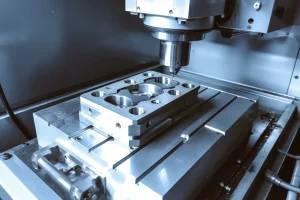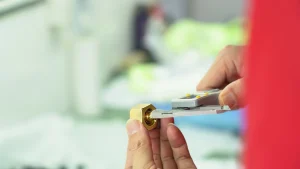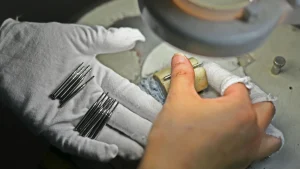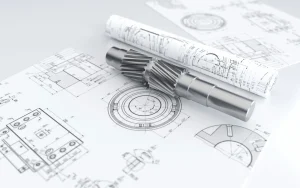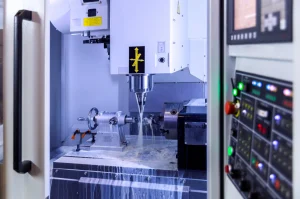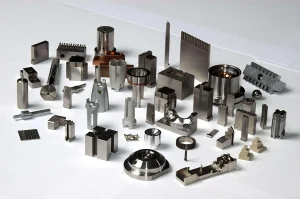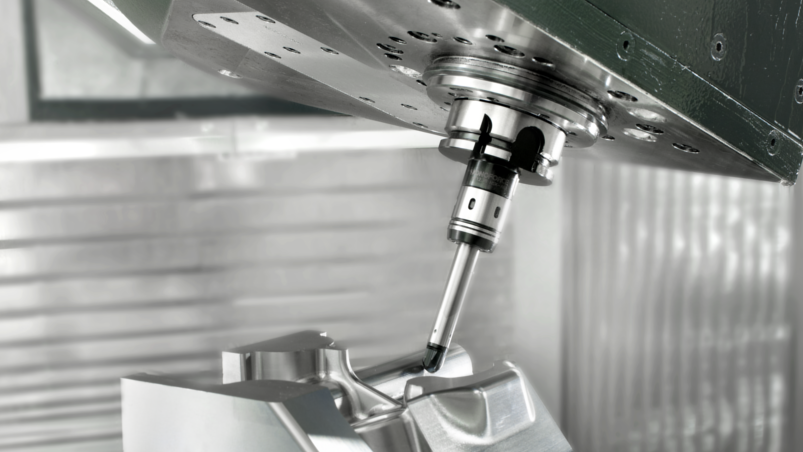
什么是轴?
轴是旋转或移动工件或工具的机械部分. The spindle rotates the workpiece or tool, and the feed axis is responsible for the displacement of the workpiece and tool.
The most common are three axes, X-axis, Y轴和Z轴, which can move in six directions: up and down, 左右, front and back.
最近几年, in order to meet the needs of processing complex shapes and reducing processing time, multi-axis machine tools have developed rapidly, such as five-axis machine tools. It adds two rotation axes, namely the B axis and the C axis, on the basis of three linear axes.
Linkage processing and indexing processing
The use of five-axis machine tools to process workpieces is usually referred to as five-axis processing, which can be divided into two types of processing: five-axis linkage processing and five-axis indexing processing.
1. 五轴联动加工
X, 是, Z, B and C axes can be moved and processed simultaneously.
2. Five-axis indexing processing
The machine tool is tilted or rotated on the B axis or C axis in advance, and then uses three axes (X, Y and Z) and the B or C axis to perform four-axis processing at the same time.
Movement direction of different axes
Five-axis machining machine tools are roughly divided into three types: worktable type, spindle type and hybrid type. Each type is different in structure and axis positioning.
然而, the general movement direction of the axis is as follows:
X-axis: vertical direction of the tool spindle
Y-axis: front and back direction of the tool spindle
Z-axis: left and right direction of the tool spindle
B-axis: along which the tool spindle rotates
C-axis: along which the tool spindle rotates
In some multi-axis equipment, there will also be a B2 auxiliary axis, but it does not belong to the sixth axis.
Advantages of 5-axis machining
1. Smooth surfaces and complex shapes can be machined
When machining smooth surfaces and complex shapes, rotation and tilting movements are required, and five-axis linkage can be quickly achieved.
2. Less installation
In three-axis machining, when the surface to be machined changes, the workpiece, tool and fixture need to be reinstalled. In five-axis machining, rotation and tilting movements are added, which can achieve continuous machining without changing the machining surface.
3. Stable precision and quality
Changes in the installation of the workpiece, fixture or tool will cause deviations from the previous processing position, which will affect the precision and cause variation. Five-axis machining greatly reduces the number of installation changes, so the risk of impact and variation will also be reduced.
4. Fewer tools and fixtures
In three-axis machining, some parts that require long tools or special tools can often be processed with ordinary tools by rotating and tilting in five-axis machining. 尤其, the protrusion of the tool can be minimized, resulting in more stable machining.
Disadvantages of 5-axis machining
Higher costs due to the increase in the number of 5-axis dedicated CNC system options. Machining procedures and controls become more complicated. Programs and controls are more difficult when machining complex geometries and continuous machining.

